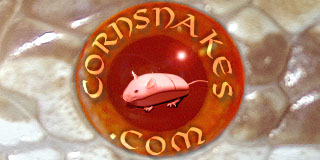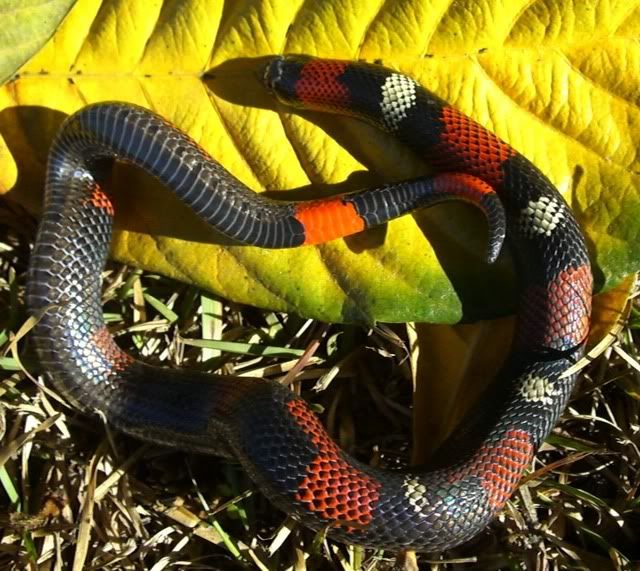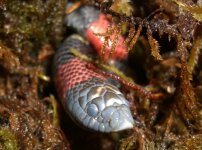-
Hello!
Either you have not registered on this site yet, or you are registered but have not logged in. In either case, you will not be able to use the full functionality of this site until you have registered, and then logged in after your registration has been approved.
Registration is FREE, so please register so you can participate instead of remaining a lurker....
Please be certain that the location field is correctly filled out when you register. All registrations that appear to be bogus will be rejected. Which means that if your location field does NOT match the actual location of your registration IP address, then your registration will be rejected.
Sorry about the strictness of this requirement, but it is necessary to block spammers and scammers at the door as much as possible.
You are using an out of date browser. It may not display this or other websites correctly.
You should upgrade or use an alternative browser.
You should upgrade or use an alternative browser.
Western Hognose Snakes
- Thread starter R.W.
- Start date
ArpeggioAngel
Around Here Somewhere....
I just got one at Daytona and I have her set up the same way as my cornsnakes. One thing to ask whoever you buy one from is to make sure they are eating mice already and not lizards.
ArpeggioAngel
Around Here Somewhere....
I would not recommend sand or dirt for them, but that is just me. Mine is kept on aspen same as the rest of my snakes. For feeding an adult - I am not sure honestly. Mine is still a baby and only eating pinks right now. I would say probably same rule of thumb as cornsnakes - a prey item one and a half times the largest width of their body should be fine.
DeadMouse
Hungry, hungry Hognose!
Western Hogs are great pets but they are a lot different in several aspects than keeping a corn snake per se. My observations with my first pair of western hogs that I've had for 6 months has been (keep in mind these are observations based on my hogs, I'm sure everybodies individual experiences will differ greatly):
1) Male is calm and easy to handle; Female is a lot more skittish and prone to being fleety.
2) Female is a great eater and never refuses a meal; Male will periodically go off food for 2-4 weeks before eating again for 6-8 weeks before fasting again.
3) While there has been significant growth in both of them (and these are late 06's), the female has only shed once and is now in blue again; the male has not shed yet and has now only gone in blue.
From talking to several breeders about male eating behavior and fasting, this seems to be a fairly normal thing even outside of the breeding cycle. It's just something that males do.
In regards to shedding, again having spoken with breeders, western hogs do not shed with much frequency after the first year.
While Westerns are usually adapted to eating rodents, some can be picky and need the occasional toad to scent with. You can't scent with just any toad either, some toads like your common store bought fire bellied's can possibly make them ill. Bufo toads and a few other common american species should do the trick. One thing though, always ask the seller what they are eating. If they are not steady on a rodent diet, you might have more work trying to get them to eat than you want to deal with.
With substrate, I keep mine (and all my other snakes) on rabbit pellets. These are easy to burrow in, they can be accidently ingested (although not preferred), they act like cat litter and clump upon defecation and depending on what (feed) stores you have around, are easy to get and fairly cheap. I did a thread on the advantages and disadvantages of rabbit pellets if you use the search engine. As hogs are a species that likes to digs and is physically evolved for this, I don't think having a sand substrate would be a problem at all, especially if you choose to feed inside separate containers. Phillippe de Vosjoli, in his book The Art Of Keeping Snakes, recommends using a sandy substrate for this digging species and even says this about concerns over impaction (page 187-188): "Risks of intestinal impaction are often raised when considering sand substrates for a variety of herps, including hognose snakes. This is the kind of generalization that is becoming common with the armies of self-made experts on the Internet. In the wild, snakes that live on sandy substrates don't usually die of impaction." Amen to that
As far as feeding a prey item one and a half times the size of the body as is usually the preferred method for corns, it doesn't necessarily seem to be as easy for hogs to eat larger items possibly due to the design of their jaw structure. This doesn't mean they aren't capable, but mine have seemed to struggle with anything that has been larger than their head. Considering that mine are a year or a little older, they are still working on large pinkies and fuzzies. The female is large enough and wolfs down the fuzzies and sometimes my male will eat one, but the male seems to prefer the large pinkies over fuzzies :shrugs:
And always remember, hognose snakes are a rear-fanged and mildly venomous animal. While they are more prone to closed-mouth striking, hissing and playing dead when threatened, there are several instances where people have become bitten possibly from feeding responses and do have the typical excessive bleeding/swelling reactions. I do not say this to ward you off of wanting to keep a hognose, but to keep you informed
I now have 6 Westerns and just aquired a pair of bicolors today. They are awesome and very personable snakes and the differences between them and the more commonly kept colubrid species makes them totally interesting and unique. Good luck should you choose to get one
1) Male is calm and easy to handle; Female is a lot more skittish and prone to being fleety.
2) Female is a great eater and never refuses a meal; Male will periodically go off food for 2-4 weeks before eating again for 6-8 weeks before fasting again.
3) While there has been significant growth in both of them (and these are late 06's), the female has only shed once and is now in blue again; the male has not shed yet and has now only gone in blue.
From talking to several breeders about male eating behavior and fasting, this seems to be a fairly normal thing even outside of the breeding cycle. It's just something that males do.
In regards to shedding, again having spoken with breeders, western hogs do not shed with much frequency after the first year.
While Westerns are usually adapted to eating rodents, some can be picky and need the occasional toad to scent with. You can't scent with just any toad either, some toads like your common store bought fire bellied's can possibly make them ill. Bufo toads and a few other common american species should do the trick. One thing though, always ask the seller what they are eating. If they are not steady on a rodent diet, you might have more work trying to get them to eat than you want to deal with.
With substrate, I keep mine (and all my other snakes) on rabbit pellets. These are easy to burrow in, they can be accidently ingested (although not preferred), they act like cat litter and clump upon defecation and depending on what (feed) stores you have around, are easy to get and fairly cheap. I did a thread on the advantages and disadvantages of rabbit pellets if you use the search engine. As hogs are a species that likes to digs and is physically evolved for this, I don't think having a sand substrate would be a problem at all, especially if you choose to feed inside separate containers. Phillippe de Vosjoli, in his book The Art Of Keeping Snakes, recommends using a sandy substrate for this digging species and even says this about concerns over impaction (page 187-188): "Risks of intestinal impaction are often raised when considering sand substrates for a variety of herps, including hognose snakes. This is the kind of generalization that is becoming common with the armies of self-made experts on the Internet. In the wild, snakes that live on sandy substrates don't usually die of impaction." Amen to that
As far as feeding a prey item one and a half times the size of the body as is usually the preferred method for corns, it doesn't necessarily seem to be as easy for hogs to eat larger items possibly due to the design of their jaw structure. This doesn't mean they aren't capable, but mine have seemed to struggle with anything that has been larger than their head. Considering that mine are a year or a little older, they are still working on large pinkies and fuzzies. The female is large enough and wolfs down the fuzzies and sometimes my male will eat one, but the male seems to prefer the large pinkies over fuzzies :shrugs:
And always remember, hognose snakes are a rear-fanged and mildly venomous animal. While they are more prone to closed-mouth striking, hissing and playing dead when threatened, there are several instances where people have become bitten possibly from feeding responses and do have the typical excessive bleeding/swelling reactions. I do not say this to ward you off of wanting to keep a hognose, but to keep you informed
I now have 6 Westerns and just aquired a pair of bicolors today. They are awesome and very personable snakes and the differences between them and the more commonly kept colubrid species makes them totally interesting and unique. Good luck should you choose to get one
tricksterpup
I has nuttin to Say.
Mine is a pissy little monster and is so freaking argumentative. One day he was totally hidden in the aspen and then reared straight up like a cobra hissing at me.
I keep him like any corn snake I have. In aspen and a smaller cage though. He is a great mouse eater. The only time I had to worry was during winter time when he went off feed. I mean he was off from late november to march. We were pretty worried but one day he started to eat for us. He gobbled down y hamster pinkies in one sitting. After that we went to full adult size mice. I think I am going to start boosting up his feedings these next few weeks just to fatten him up for the winter.
I keep him like any corn snake I have. In aspen and a smaller cage though. He is a great mouse eater. The only time I had to worry was during winter time when he went off feed. I mean he was off from late november to march. We were pretty worried but one day he started to eat for us. He gobbled down y hamster pinkies in one sitting. After that we went to full adult size mice. I think I am going to start boosting up his feedings these next few weeks just to fatten him up for the winter.
tricksterpup
I has nuttin to Say.
Here are a few pictures of my hoggy Babe.

and a nice belly shot.

and a tail end shot.


and a nice belly shot.

and a tail end shot.

v_various
secretly normal
I want to be the one to post "THE LINK", weeeeeee
http://www.herpnet.net/bite/
That link has been around for a while, but still one of my favorites. I totally want a hoggie someday.
http://www.herpnet.net/bite/
That link has been around for a while, but still one of my favorites. I totally want a hoggie someday.
v_various said:I want to be the one to post "THE LINK", weeeeeee
http://www.herpnet.net/bite/
That link has been around for a while, but still one of my favorites. I totally want a hoggie someday.
LOL! I was just about to do that! Fascinating animals, but that link scares the heck out of me.. Anybody ever had a bite like that?
DeadMouse
Hungry, hungry Hognose!
Ah, now look what tricksterpup started, an obligatory picture show. How can I refuse? :dancer:
Here's some of the fun my hogs have provided:
Flicker: Male Western
Johnny Carson "Carnac the Magnificent" Impression -

Jack-in-the-box -

Hissy: Female Western
Feeding acrobatics -

Evil looks -

Sherbert: Albino Western Male
Telling me what he really thinks -

No name yet: South American Bicolor
Sticking her whole head in the water bowl -

Then letting forth a belch -

I love our hoggies!!! :crazy02:
Here's some of the fun my hogs have provided:
Flicker: Male Western
Johnny Carson "Carnac the Magnificent" Impression -

Jack-in-the-box -

Hissy: Female Western
Feeding acrobatics -

Evil looks -

Sherbert: Albino Western Male
Telling me what he really thinks -

No name yet: South American Bicolor
Sticking her whole head in the water bowl -

Then letting forth a belch -

I love our hoggies!!! :crazy02:
TripleMoonsExotic
I <3 Stripes!
I keep mine on a mixture of organic soil & peat moss, but they get pulled for feeding of course. They love to dig.  I want to get that new ZooMed Excavator Clay so I can build tunnels (especially ones I can see inside) and then put my substrate layer down for them to dig.
I want to get that new ZooMed Excavator Clay so I can build tunnels (especially ones I can see inside) and then put my substrate layer down for them to dig.
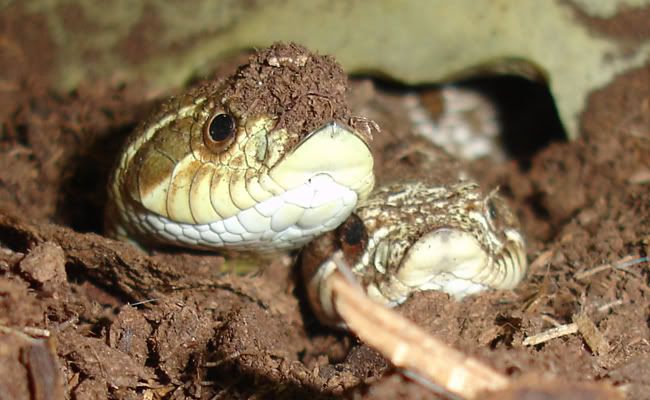

DeadMouse
Hungry, hungry Hognose!
Nanci said:Deadmouse, what species is the bi-color?
I believe the bi-color's are from the species Lystrophis Pulcher. The seller told me it was his belief that they were either a subspecies or some type of intergrade but he wasn't completely sure as he had gotten these snakes in a trade last November from I guess it was the original breeder. The seller told me that they started out as normal tri-colors and then progressed with each shed to lose the red although they do have the occasional little red scale or splotch here. To me, they look like the Cal Kings of the Hoggie world
Here's the actual advertised pictures from the seller:
Female

Male

These snakes are 04's also supposedly proven breeders, the female being claimed to have laid 3 clutches last year. So, hopefully 08 will prove to be an interesting and productive year having these guys
Here's one I took of the male (reportedly in shed) after introducing him into his new home:

Nanci
Alien Lover
Jenea Wood, who has bred a ton of L. pulchers this year, has one that is turning bi-color black and white. I've seen others that lose the white and are bi-color black and red. She reports that they will ocntinue to clutch as long as the female continues to be fed, and the only way to get them to stop after however many clutches you want is to stop feeding the female.
Here's my L. pulcher in blue.
Nanci
Here's my L. pulcher in blue.
Nanci
Attachments
DeadMouse
Hungry, hungry Hognose!
Nanci said:Jenea Wood, who has bred a ton of L. pulchers this year, has one that is turning bi-color black and white. I've seen others that lose the white and are bi-color black and red. She reports that they will ocntinue to clutch as long as the female continues to be fed, and the only way to get them to stop after however many clutches you want is to stop feeding the female.
Very interesting! Thanks for the valuable info Nanci
Like I said, it will prove interesting to see what types of clutches I get out of these two next year. On me assuming they are L. Pulcher's, I only came to this possible conclusion based on comparable pictures I found online on hognose.com of other Pulcher's that were bi-colored. The seller I got these from told me he believed or was told they could possibly be a subspecies or an intergrade, but if Jenea is having bi-colored morphs coming from normal tri-colored parents, then perhaps my pair is nothing more than a morph themselves. I wish I had more info on them :shrugs: but I still couldn't pass them up even not knowing what exactly they are
PtDnsr
I like calculus
[rant]That link drives me up the wall. Anyone who lets a snake (any snake) chew on them for 5 MINUTES is an idiot. I know that some people have a reaction to the bites. The best example I've heard is comparing it to a bee sting - some people react and some don't. I'd like to see a link of someone that was just bitten and immediately got the snake off, not waiting 5 minutes like this genius.[/rant]v_various said:I want to be the one to post "THE LINK", weeeeeee
http://www.herpnet.net/bite/
That link has been around for a while, but still one of my favorites. I totally want a hoggie someday.
Ok, done with that. I have 5 westerns - theoretically 2.3 but I'm not sure on our biggest one - he might really be a she. They're so much fun and have so much personality. The obligatory pics will be at the end with captions. The adult I have can easily take a jumbo adult mouse (I think they're around 40g) with no problem. It's amusing because half the time he/she chomps right in the middle of the mouse and then has to slowly work towards the head. Enjoy the pics!
~Katie
Gabbi - 06 female

Lizi - early 05 female

Nozi - late 05 female

Sir Hiss - 06 male, he lives up to his name

Stumpy - adult male? female? He's pretty good size for a male and the tail scale count is right on the edge. Don't you like the reflection of the flourescent lights in his eyes in the one pic?

Stumpy in April 06 - notice how much weight he gained compared to the pic below

Stumpy when we first got him - weighed only 45g and hadn't been fed in 3 months because they "didn't have the right size mice" - he's the best snake and has an awesome personality.
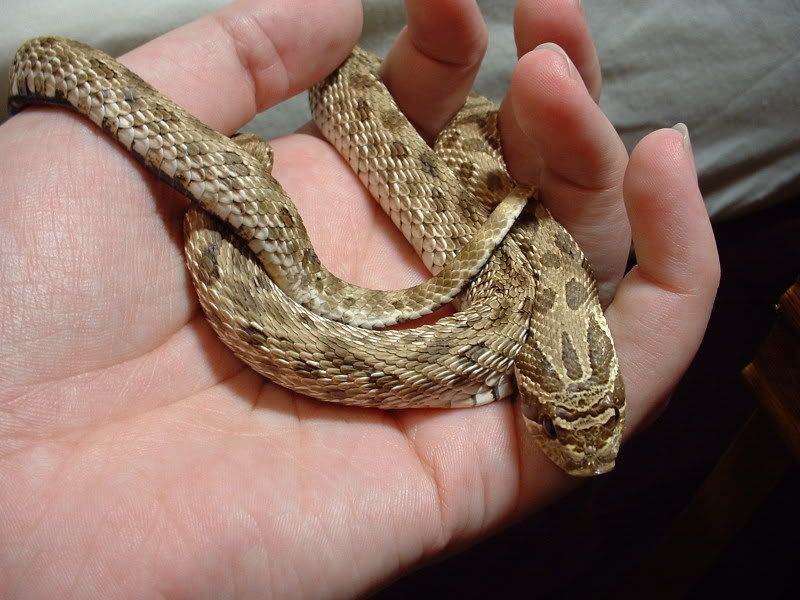
Nanci
Alien Lover
PtDnsr said:[rant]That link drives me up the wall. Anyone who lets a snake (any snake) chew on them for 5 MINUTES is an idiot.
I don't know, I think it's pretty cool that he took one for the team. Now we all know. No one ever has to let a hoggy chew on them again! I found the whole progression pretty interesting.
Nanci
